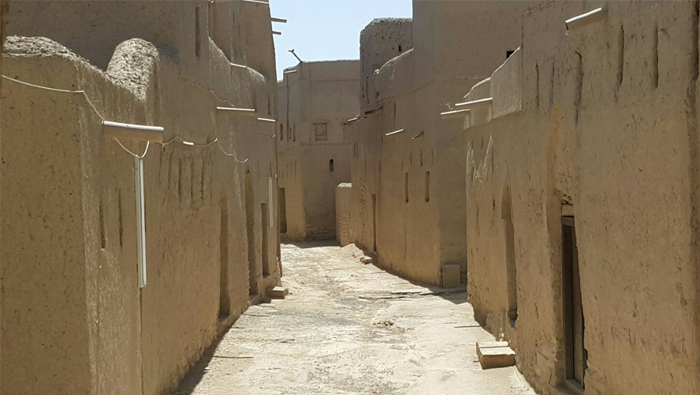
Manah: Harat Al Bilad in the Wilayat of Manah is one of Oman’s largest ancient archaeological neighborhoods. It contains 376 houses and nearly 250 wells dating back nine centuries.
The scholar, Sheikh Nejad bin Ibrahim, was among the first who settled in Harat Al Bilad and founded Al Yamania Quarter in 470 Hijri. Harat Al Bilad has been referred to by several names, such as “Manah Fortress” and “Fortress of bin Nejad”. It was the seat of an active scientific movement and where many books and Fiqh encyclopedias were copied, the historical researcher Khalfan bin Salim Al Busaidi has said in his book, Donations and Grants in the history of the people of Manah.
Located in the middle of the wilayat of Manah, visitors to Harat will find several gates, including the main Morning Gate, which was built close to the market of the wilayat.
The other gates are spread throughout the Harat, namely the “Bab Al Qasab”, “Bab Al Nasr”, “Bab Al Rawla”, “Bab Al Burj”, and “Bab Al Duajain”.
For the defence of the Harat, it had a wall on all sides. The people took care of the wall because it was the first line of defence. In addition to the defence towers, there were several openings and windows along the walls to open fire on the enemy.
Harat Al Bilad includes four ancient mosques spread along its central lane. They are Al Ali, Al Ain, Al Shara and Al Rahba.
Dr. Eros Baldisera, professor of Arabic literature at the University of Venice, Italy, and author of “Writings in the Old Omani Mosques”, said that the Mihrab of Al Ali Mosque dates back to the year 909 Hijri. The Mihrab of Al Ain Mosque dates back to 911 Hijri, and that of the Al Shara Mosque dates back to 922 Hijri.
Ahmed Al Tamimi, Director of Heritage and Culture Department in Governorate of A’Dakhiliyah, said that to preserve this cultural legacy, the Ministry of Heritage and Culture carried out a project to renovate Harat Al Bilad. The actual restoration work began in 2008 under the supervision of specialists from the Directorate General of Antiquities and Museums, he told the Oman News Agency. The work included restoration and reconstruction of dilapidated and falling houses, in addition to the restoration of mosques along the main long corridor. The repairs were completed at the end of 2016.
The Ministry of Tourism and Culture, in cooperation with the Ministry of Heritage and Culture, the Implementation Support and Follow-up Unit, and Omran Company organised a seminar to open these sites for economic use and management by private companies and small and medium enterprises within clear environmental heritage and social norms. The aim is to give visitors a taste of what Omani life was like at these national heritage sites.
It is worth mentioning that Schumann Pandya from the University of Liverpool received a doctorate on Harat Al Bilad after a detailed study spread over some eight years he spent between the walls of this neighborhood, and set up an exhibition in the museum of Bait Al Zubair.